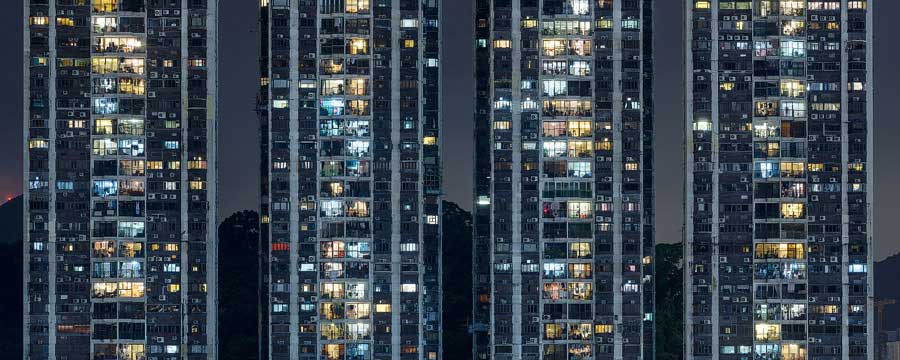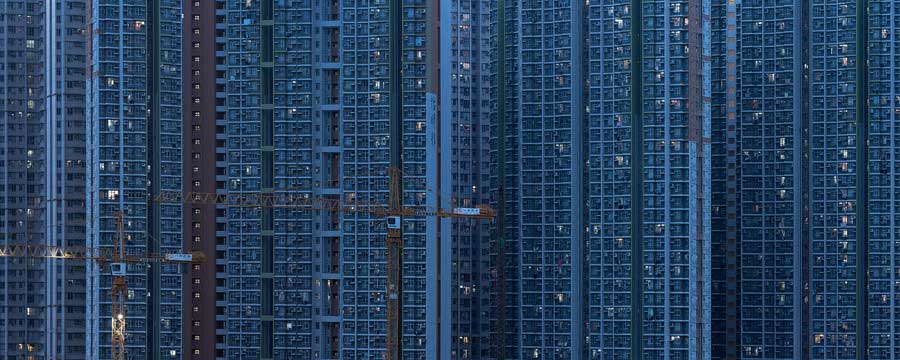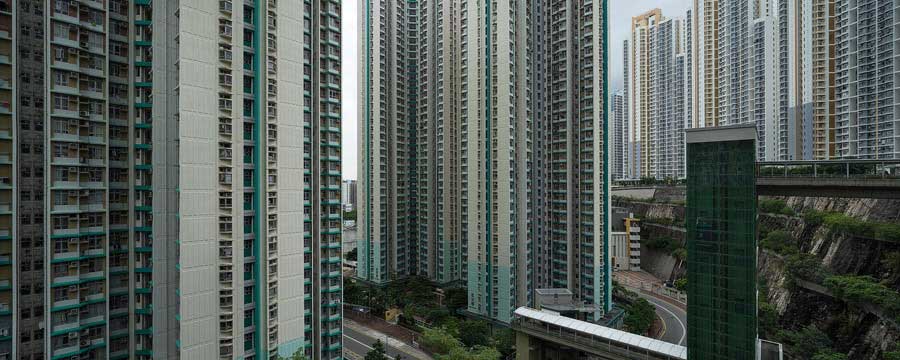Simon Butterworth first became interested in Hong Kong’s high-rise residential buildings during a month long visit in 2013. It wasn’t his first trip to HK but it was the first time he had explored the outer reaches of the city where most of the large housing schemes are situated.
Blissfully unaware of the towering presence of Michael Wolf’s Architecture of Density series, Butterworth toured several areas of HK shooting what he describes as ‘unintentional, but essentially second-rate versions of Wolf’s work’. A friend emailed him a link to Wolf’s website and Butterworth’s high-rise dream was shattered in a matter of seconds.
Down but not out, Butterworth returned to Scotland, where he is based, to give the high-rise question some serious thought; how to photograph the amazing high-rise residential buildings of HK but distance his work visually from that of Michael Wolf.
Over the next eighteen months, an idea for documenting the massive towers in an original way started to take shape. As a lover of Scotland’s wild mountain regions, Butterworth had been inspired to take up photography in the first instance by the panoramic images of Colin Pryor. Since that time, the panoramic format has been close to Butterworth’s heart. He felt that a series of large panoramas encompassing the various aspects of high-rise construction could be the answer.
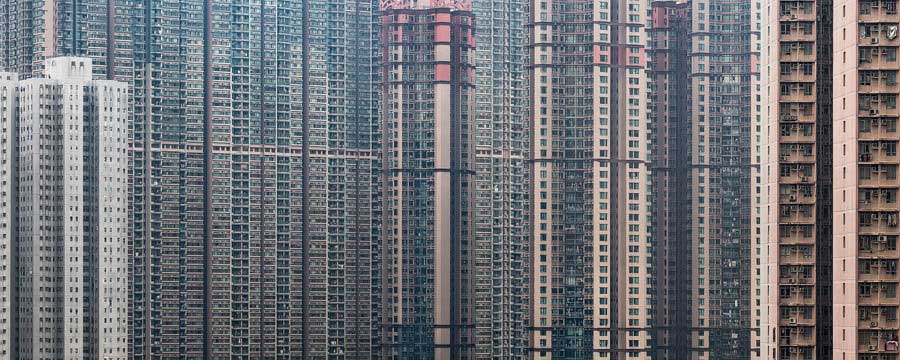
In 2015 Butterworth returned to HK to spend almost a month shooting a series of digitally-stitched panoramas at a range of locations, chosen by experience and also extensive research on Google Earth. His preferred method was to utilise Canon tilt shift lenses on a Sony A7RII, this produces a 2.5 x 1 format panorama using the shift facility of the lens. He also used longer lenses – up to 300mm – where circumstances demanded it.
The resulting images formed a larg e project entitled Hong Kong. Empire of the Third Dimension. This contains th ree subcategories 1. Citadel: shows the estates in an illustrative way – how they sit in the landscape and how the buildings relate to one another. 2. Propinquity: essentially abstract, showing the buildings overlapping to block any intrudin g elements. And finally 3, Night: this encapsulating elements of the previous two categories, but shot at night.
The main problem Butterworth en countered whilst shooting Empire was the need to maintain parallel verticals. Because the perspective correcting capability of the tilt shift lens was being used to create the panorama, it couldn’t also be used to straighten verticals. The way round this was to shoot from half way up a nearby hillside, or negotiate access to an adjacent building; both options are fraught with difficulties and were only overcome after walking many miles in what is (compared to Scotland) roasting heat.
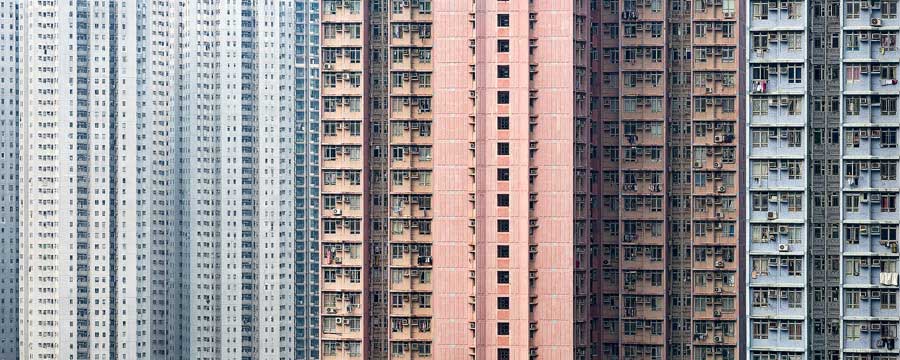
Once back in the UK Butterworth started the long process of constructing and editing hundreds of panoramas and ordering them into groups and complementary series – this took the best part of a year. He says he finds it impossible to make objective decisions about which images to use or discard until there has been a time lag of several months post-shoot.
The final prints were made at 76 x 190cm, a size which Butterworth feels conveys the sheer physical presence of these enormous towers. One of the Propinquity series was exhibited at the Royal Academy of Art in London during the summer of 2016, to great critical acclaim.
Butterworth was at pains to point out the joys of working in HK. The people are incredibly accepting of photographers and the public transport is simply superb, it must be the most photo-friendly city in the world.
Butterworth return ed to Hong Kong in 2016 to shoot a series called Terminal. This looks at the speed of urban development in outlying areas and how populations cope with the pressure of fast-changing environments. [Official Website]



